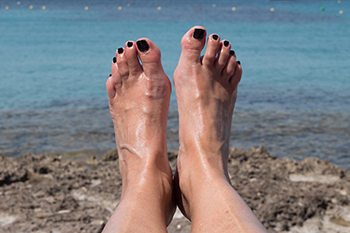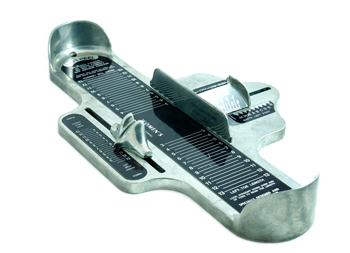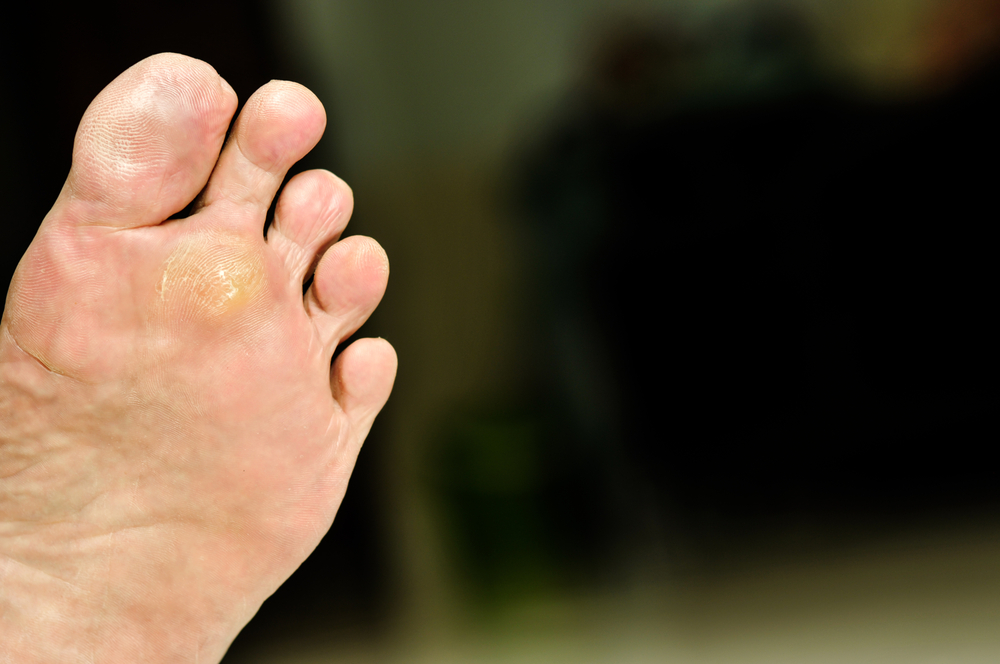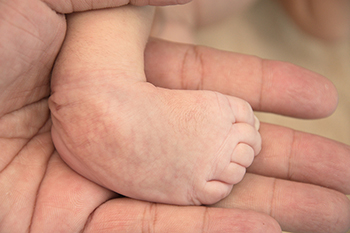Connect With Us
Blog
Items filtered by date: April 2023
Stress Fractures and Exercises

Stress fractures can occur in the bones of the feet when tiny cracks develop over an extended period due to repetitive force. When determining if a person is able to engage in exercise when recovering from a stress fracture, a medical professional will have to assess the particular circumstances of the individual’s unique case. If the stress fracture is not too severe, your medical professional might suggest engaging in a range of motion exercise. These specific exercises can improve mobility in the foot and ankle region. They should also not cause the patient any pain. Alternatively, someone recovering from a stress fracture might be able to engage in strengthening exercises to rebuild strength in the muscles of the feet. If you are suffering from a stress fracture in the feet, it is recommended that you contact a podiatrist today for treatment and advice.
Activities where too much pressure is put on the feet can cause stress fractures. To learn more, contact Ronald Pieroni, DPM from Bolingbrook Foot and Ankle Center. Our doctor can provide the care you need to keep your pain free and on your feet.
Dealing with Stress Fractures of the Foot and Ankle
Stress fractures occur in the foot and ankle when muscles in these areas weaken from too much or too little use. The feet and ankles then lose support when walking or running from the impact of the ground. Since there is no protection, the bones receive the full impact of each step. Stress on the feet can cause cracks to form in the bones, thus creating stress fractures.
What Are Stress Fractures?
Stress fractures occur frequently in individuals whose daily activities cause great impact on the feet and ankles. Stress factors are most common among:
- Runners
- People affected with Osteoporosis
- Tennis or basketball players
- Gymnasts
- High impact workouts
Symptoms
Pain from the fractures occur in the area of the fractures and can be constant or intermittent. It will often cause sharp or dull pain with swelling and tenderness. Engaging in any kind of activity which involves high impact will aggravate pain.
If you have any questions please feel free to contact our office located in Bolingbrook, IL . We offer the newest diagnostic and treatment technologies for all your foot and ankle needs.
Do Your Child's Feet Hurt?
Two Methods to Measure the Feet

There are many reasons why people buy shoes. They may be needed to perform in high-intensity activities or for casual everyday walking. Whatever the reason, wearing shoes that fit correctly and adequately support the feet is beneficial. Research has shown that approximately two-thirds of people worldwide may have poor foot health from wearing shoes that do not fit correctly. It is helpful to have an accurate foot measurement before purchasing shoes. This can be done by measuring the feet at the end of the day when they are at their largest and while wearing socks. Stand on a piece of paper taped to the floor and begin by tracing the outline of the foot, which may be easier if done by another person. After measuring the length and width, the correct shoe size can be found using a conversion chart. Alternatively, many shoe stores have a Brannock device, which is generally successful in determining the correct shoe size. If you have additional questions about buying shoes that fit correctly, it is suggested that you speak with a podiatrist who can help you find the knowledge you seek.
Getting the right shoe size is an important part of proper foot health. Seek the assistance of Ronald Pieroni, DPM from Bolingbrook Foot and Ankle Center. Our doctor will provide the care you need to keep you pain-free and on your feet.
Getting the Right Shoe Size
There are many people who wear shoes that are the incorrect size, negatively affecting their feet and posture. Selecting the right shoes is not a difficult process, so long as you keep several things in mind when it comes to choosing the right pair.
- When visiting the shoe store, use the tools available to measure your foot.
- Be sure there is ‘wiggle room’. There should be about an inch between your toes and the tip of your shoes.
- Do not always assume you are the same size, as manufacturers run differently.
- Purchase shoes later in the day, as your feet swell as the day progresses.
- If a shoe is not comfortable, it is not suitable. Most shoes can’t be ‘broken in’, and comfort should be the ultimate goal when it comes to choosing the right pair of shoes
As our feet hold our body weight and keep us moving, it is important to treat them right. Picking the right pair of shoes can provide your feet comfort and mobility without pain.
If you have any questions, please feel free to contact our office located in Bolingbrook, IL . We offer the newest diagnostic and treatment technologies for all your foot care needs.
Plantar Warts or Corns?

Plantar warts and corns are two distinct, yet similar, foot conditions that often get confused with one another. Plantar warts are growths on the feet spread by the human papillomavirus, whereas corns are thickened areas of the skin that grow in response to pressure. In order to determine whether an area of the feet is technically a plantar wart or a corn, a medical professional may examine the location of the affected area of the skin. For example, corns are usually adjacent to bones whereas this is not always necessarily the case with a plantar wart. Also, a medical professional may perform a squeeze test where the sides of the affected skin are gently squeezed together. If the patient feels no pain, this might mean that they have a corn rather than a plantar wart. If you believe that you might have a plantar wart or a corn, it is suggested that you contact a podiatrist for treatment.
Plantar warts can be very uncomfortable. If you need your feet checked, contact Ronald Pieroni, DPM from Bolingbrook Foot and Ankle Center. Our doctor will assist you with all of your foot and ankle needs.
About Plantar Warts
Plantar warts are the result of HPV, or human papillomavirus, getting into open wounds on the feet. They are mostly found on the heels or balls of the feet.
While plantar warts are generally harmless, those experiencing excessive pain or those suffering from diabetes or a compromised immune system require immediate medical care. Plantar warts are easily diagnosed, usually through scraping off a bit of rough skin or by getting a biopsy.
Symptoms
- Lesions on the bottom of your feet, usually rough and grainy
- Hard or thick callused spots
- Wart seeds, which are small clotted blood vessels that look like little black spots
- Pain, discomfort, or tenderness of your feet when walking or standing
Treatment
- Freezing
- Electric tool removal
- Laser Treatment
- Topical Creams (prescription only)
- Over-the-counter medications
To help prevent developing plantar warts, avoid walking barefoot over abrasive surfaces that can cause cuts or wounds for HPV to get into. Avoiding direct contact with other warts, as well as not picking or rubbing existing warts, can help prevent the further spread of plantar warts. However, if you think you have developed plantar warts, speak to your podiatrist. He or she can diagnose the warts on your feet and recommend the appropriate treatment options.
If you have any questions please feel free to contact our office located in Bolingbrook, IL . We offer the newest diagnostic and treatment technologies for all your foot and ankle needs.
Examples of Congenital Foot Conditions

Most babies are born with normal feet, despite the few structural abnormalities that may occur. These can include clubfoot and overlapping toes and may be treated without having surgery. Clubfoot is defined as developing in the womb, and the baby is born with twisted feet that point inward and down. Metatarsus adductus is a congenital foot condition that causes the baby’s toes to point in and they can be difficult to straighten. In severe cases, surgery may be necessary for permanent straightening. Babies who are born with one or more extra toes are known to be polydactyly. It is a fairly common condition and may happen for genetic reasons. Some babies are born with certain toes that overlap and are noticeable when the pinky toe crosses the fourth toe. It is generally not a bothersome condition, but special shoes may need to be worn. If you would like additional information about congenital foot problems, it is suggested that you confer with a podiatrist who can help you with the knowledge you are seeking.
Congenital foot problems require immediate attention to avoid future complications. If you have any concerns, contact Ronald Pieroni, DPM of Bolingbrook Foot and Ankle Center. Our doctor can provide the care you need to keep you pain-free and on your feet.
Congenital foot problems are deformities affecting the feet, toes, and/or ankles that children are born with. Some of these conditions have a genetic cause while others just happen. Some specific foot ailments that children may be born with include clubfeet, polydactyly/macrodactyly, and cleft foot. There are several other foot anomalies that can occur congenitally. What all of these conditions have in common is that a child may experience difficulty walking or performing everyday activities, as well as trouble finding footwear that fits their foot deformity. Some of these conditions are more serious than others. Consulting with a podiatrist as early as possible will help in properly diagnosing a child’s foot condition while getting the necessary treatment underway.
What are Causes of Congenital Foot Problem?
A congenital foot problem is one that happens to a child at birth. These conditions can be caused by a genetic predisposition, developmental or positional abnormalities during gestation, or with no known cause.
What are Symptoms of Congenital Foot Problems?
Symptoms vary by the congenital condition. Symptoms may consist of the following:
- Clubfoot, where tendons are shortened, bones are shaped differently, and the Achilles tendon is tight, causing the foot to point in and down. It is also possible for the soles of the feet to face each other.
- Polydactyly, which usually consists of a nubbin or small lump of tissue without a bone, a toe that is partially formed but has no joints, or an extra toe.
- Vertical talus, where the talus bone forms in the wrong position causing other bones in the foot to line up improperly, the front of the foot to point up, and the bottom of the foot to stiffen, with no arch, and to curve out.
- Tarsal coalition, when there is an abnormal connection of two or more bones in the foot leading to severe, rigid flatfoot.
- Cleft foot, where there are missing toes, a V-shaped cleft, and other anatomical differences.
- Macrodactyly, when the toes are abnormally large due to overgrowth of the underlying bone or soft tissue.
Treatment and Prevention
While there is nothing one can do to prevent congenital foot problems, raising awareness and receiving neonatal screenings are important. Early detection by taking your child to a podiatrist leads to the best outcome possible.
If you have any questions please feel free to contact our office located in Bolingbrook, IL . We offer the newest diagnostic tools and technology to treat your foot and ankle needs.

